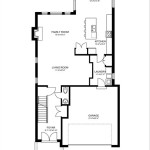Understanding the Essential Aspects of an Electrical Layout Plan for Your Home
An electrical layout plan is a crucial aspect of any home design. It provides a comprehensive roadmap for the electrical systems within your house, ensuring safety, functionality, and efficiency. Here are the essential elements to consider when creating an electrical layout plan for your home:
1. Load Calculation:
The first step in designing an electrical layout is calculating the total electrical load that your home will require. This includes identifying the appliances, lighting fixtures, and other electrical devices you intend to use. A licensed electrician can assist you with this calculation, considering factors such as the size of your home, the number of occupants, and your lifestyle needs.
2. Circuit Design:
Once the electrical load is determined, the layout plan must include the design of circuits. Circuits are individual pathways that distribute electricity throughout your home. Each circuit has a specific amperage rating, which limits the amount of current it can carry. The layout should ensure that circuits are adequately sized to handle the load without overloading.
3. Wire Selection:
The electrical layout plan specifies the type and size of wires to be used for each circuit. Wires have varying current-carrying capacities and insulation levels, and the appropriate choice depends on the load and the environment in which they will be installed. Selecting the correct wires is essential for safety and longevity.
4. Panel Location:
The electrical panel is the central point from which electricity enters your home and is distributed throughout the circuits. The layout plan should indicate the optimal location for the panel, considering accessibility, safety, and maintenance requirements. The panel should be easily accessible for troubleshooting and future upgrades.
5. Lighting Design:
The electrical layout plan should include a comprehensive lighting design. This includes the placement of lighting fixtures, switches, and dimmers. Proper lighting design ensures adequate illumination levels, enhances aesthetics, and contributes to the overall ambiance of your home.
6. Switch and Outlet Placement:
The location of switches and outlets is critical for convenience and functionality. The layout plan should consider the placement of these devices in relation to furniture, appliances, and other objects in each room. Switches should be readily accessible, and outlets should be positioned to accommodate the needs of various devices and appliances.
7. Grounding and Bonding:
Grounding and bonding are essential safety measures in an electrical system. The layout plan should include provisions for grounding and bonding all electrical components, including appliances, fixtures, and the electrical panel. Proper grounding and bonding protect against electrical shock and ensure the safe operation of your electrical system.
Conclusion:
A well-designed electrical layout plan is an invaluable tool for ensuring a safe, functional, and efficient electrical system in your home. By considering the essential aspects outlined above, you can create a plan that meets your specific needs and provides peace of mind for years to come.
Create An Electrical Plan Roomsketcher Help Center

Electrical Drawing Blueprints Plan Layout Floor

Free House Wiring Diagram Edrawmax

Do A Professional Electrical Floor Plan Of House

House Electrical Plan Diagram Symbols

It S Electrical

House Electrical Plan Engineering World Layout Floor Drawing

Electrical Layout Plan Of House Floor Design Autocad File Cadbull

Make A Floor Plan And Electrical

Home Electrical Plan Free Electric Schematic Kozikaza








